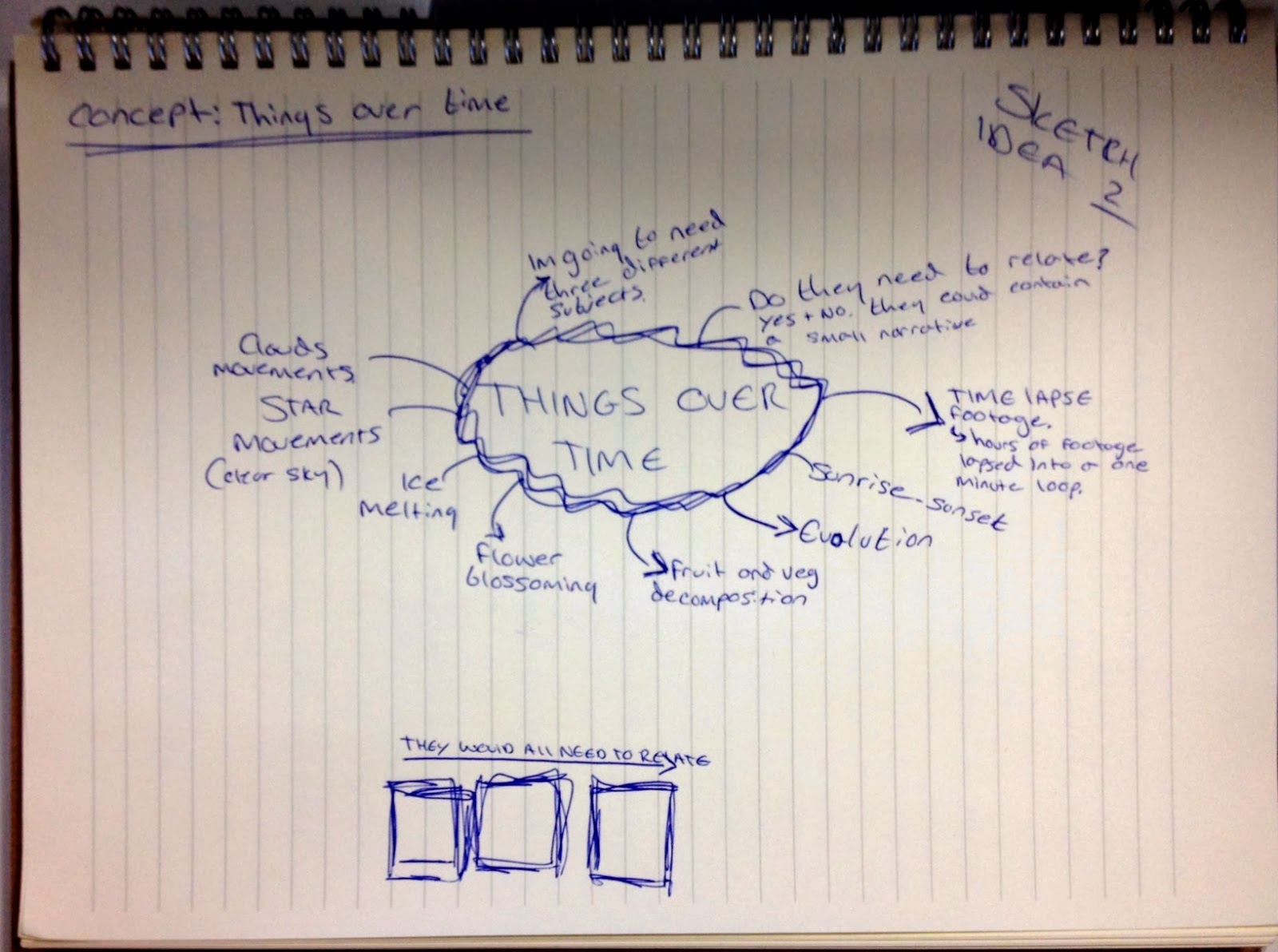Three Rough Ideas
 |
| Past, Present, Future |
This Idea came across when researching into SpaceTime. I like the whole concept, and that over a period of time your past, present and future can be affected by what you do. Also Einsteins SpaceTime theory also inspired me with the whole concept.
I have been doing research, and brainstorming, into many ways I could approach this idea. One idea that come to mind was using the three portrait screens as each feature. For example: The first screen will loop footage of a mans past. The second screen, will loop footage of that mans present moment, and the third screen will loop footage of the mans future.
There is a twist to the footage being looped, and in relation to SpaceTime, the actions taken in rather the past, present or future screen will effect each screen. For example: The man featured in the future screen might take a gun out at one point and decide to shoot a family member, now this will effect what will feature on the past screen, and the past screen will show the man as a child with a dysfunctional family.
This is just a rough idea of something I could look more into and produce for this assignment.
 |
| Things over time |
Another idea that come into mind was using the screens to represent the idea of things over time, and how things change over time. I was looking at ways to try and approach this and one way that I had looked into was producing a time lapse.
I started to look into time lapse, and different ways to produce a time lapse, and I found this article that really helped me. "How To Make Time Lapse Video Ultimate Guide." (http://www.hongkiat.com/blog/how-to-make-time-lapse-video-ultimate-guide/)
Time Lapse of what? This is what come into mind after reading the article. So I started to look at a few time lapse videos on youtube to get some inspiration.
Above are just a couple of videos I had found interesting. I also started look into tutorials on how to edit time lapse videos using after effects, and color correction before the time lapse edit.
 |
| Not Enough Time |
My last idea that I found interesting was the whole idea of not having enough time in life. This idea was inspired by an article I read on thinksimplenow (http://thinksimplenow.com/clarity/not-enough-time/).
The idea will consist of one man walking through screen to screen, when time freezes, and the surroundings around him stop moving. As he notices what has happened he starts to run through the screens continuously.
In some perspective the idea was also inspired by Einstein's theory on the fabric of time. The idea defeats the purpose of not having enough time because time has froze, and that gives him time, but he still continues to rush (run) throughout the screens continuously.
I looked more in depth on how this idea could work in terms of freezing time. I found this tutorial on videocopilot (http://www.videocopilot.net/tutorials/time_freeze/) which had helped a lot. I think a few test shots, and practice, would help achieve this effect.






















